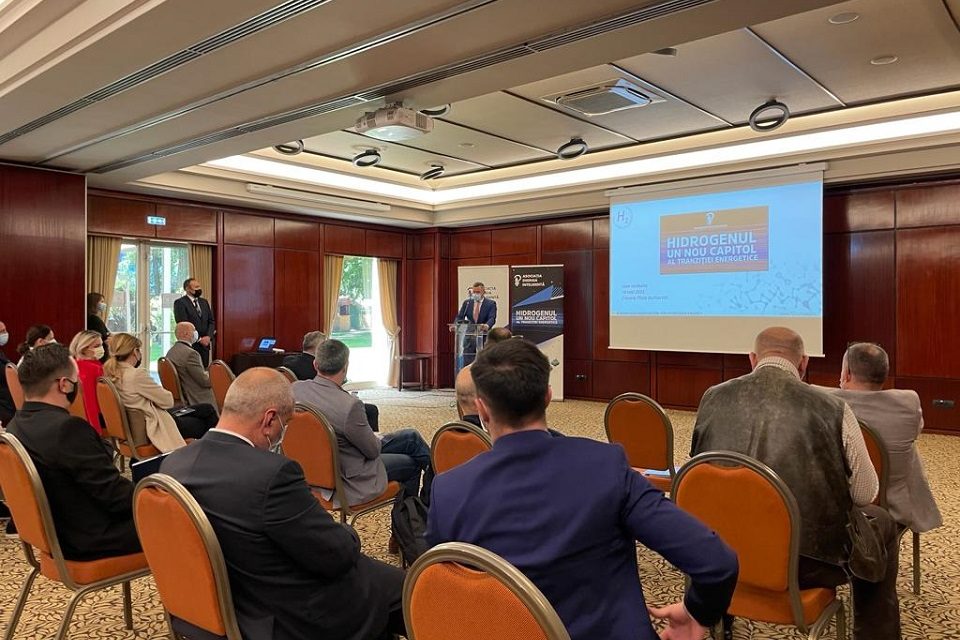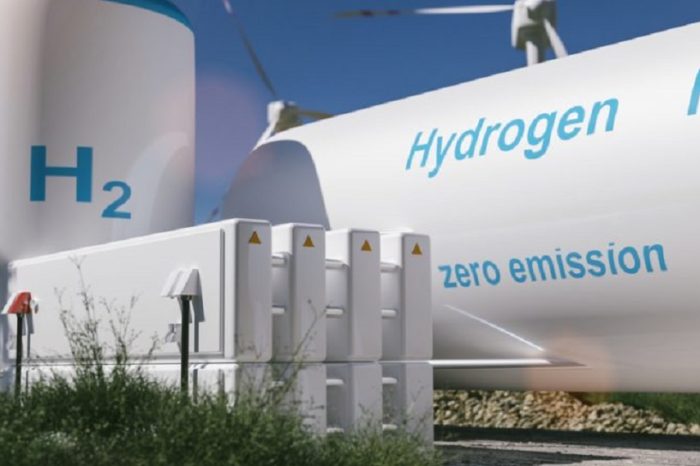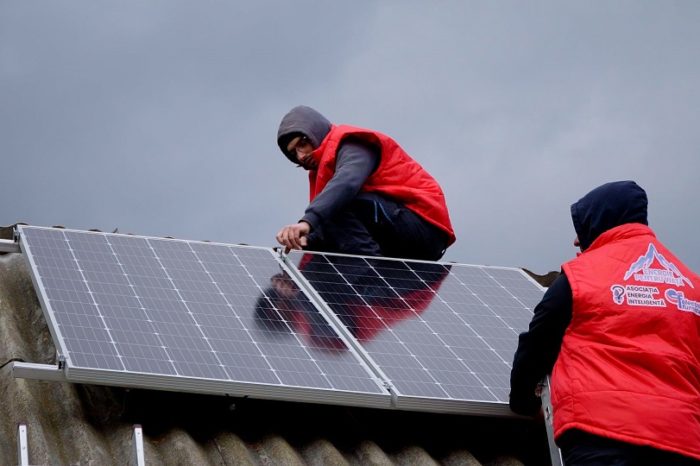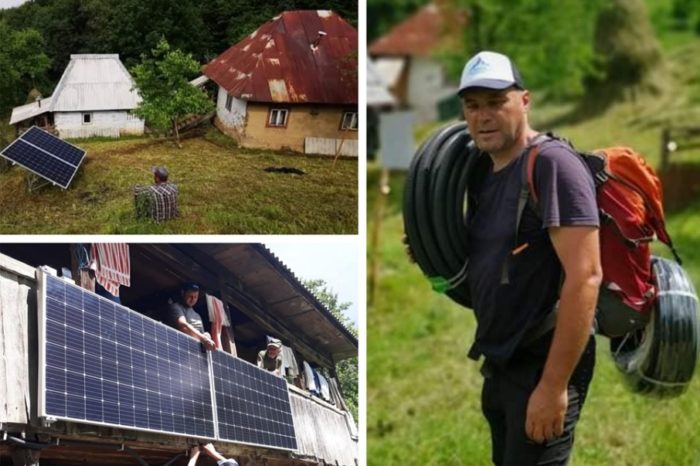Asociatia Energia Inteligenta launches, for the first time in Romania, the study “Hydrogen, a new chapter in the energy transition”

Asociatia Energia Inteligenta (The Intelligent Energy Association) launches “Hydrogen, a new chapter in the energy transition“, the first study in Romania that analyzes the impact of hydrogen on the components, equipment and installations of the gas system in Romania.
This study is part of a complex project on the possibility of injecting hydrogen into the natural gas transmission and distribution network.
This study is part of a complex project on the possibility of injecting hydrogen into the natural gas transmission and distribution network. Its realization was possible with financial support from SNTGN Transgaz SA and with scientific support from the Association for Hydrogen Energy in Romania.
“Hydrogen injection into gas networks is a difficult and expensive action, but it can be achieved if the action is passed from the media and superficial plan of the current approach to a professional plan. I believe that beyond pipes and appliances that are compatible with hydrogen, the most important element, totally neglected in public discussions, is consumers, people, who will use it. The three directions of hydrogen use: protecting people’s lives, protecting the environment and the cost of conversion, are key elements of the future and their strong impact on society requires that the subject of hydrogen be approached in a professional way and not “heirupist” and media, for to have a future. Hydrogen will have a future in Romania or Romania will have green energy in the future, only if we replace the current amateurism with professionals, we will carry out research, analysis and studies to make this dangerous, difficult to handle and expensive fuel accepted and used in the safe role it can play in the future, that of Vector of the Energy of the Future” said Dumitru Chisăliță, President of the Intelligent Energy Association.
The use of hydrogen as an energy vector is an essential element for sustainable development. However, there are many challenges for implementing the components of a hydrogen-based energy system. At European level, the idea that the presence of hydrogen in the energy sector is a solution that will solve a number of problems, such as energy security, energy equity and a sustainable environment, is accepted. By harmonizing these elements, the basis of prosperity and competitiveness at the level of each country is substantiated. Romania’s energy system and, implicitly, the natural gas sector are undergoing a transformation. The European context will make its mark on them, and hydrogen will be one of the important and integral components of the energy system. Hydrogen opens a new chapter in the energy transition, in which its unique properties allow it to be used for the storage and distribution of energy, without carbon dioxide emissions, through all forms of use. Through its applications, hydrogen is indeed able to efficiently and cleanly generate electricity and heat.
“Currently, the main methods of industrial hydrogen production, steam reforming of hydrocarbons and water electrolysis are expensive. In the perspective of 2050, a series of detailed studies and projects in the study indicate, from certain points of view, significant cost savings, which can be achieved through an integrated sectoral coupling approach, which includes the advantages of existing gas infrastructure. The use of natural gas in a climate-neutral energy system will inevitably bring restrictions. The transformation of natural gas into hydrogen by reforming gases with the capture and sequestration of carbon dioxide or the transformation of renewable energy into hydrogen by electrolysis, allow energy consumers to obtain cost reductions by using existing transport and storage capacities of gas infrastructure, “said Ioan Iordache , Member of the Intelligent Energy Association.
The conclusions of the study show that all pipelines carrying hydrogen gas are technically feasible and have been operating for a long time in various locations and countries, but the scope of these pipeline systems is quite limited. Regarding the development of an infrastructure for storage, transport and distribution of hydrogen through pipelines in Romania, we must consider several scenarios or variants that start from certain national and international realities that take into account various scientific, technical, social aspects. -economic, geographical, as well as existing trends in the scientific, technical or economic community of the implementation of hydrogen technology in energy systems.
It must be possible to interconnect this infrastructure with similar infrastructure that will be developed in Europe. Starting from such a hydrogen infrastructure, the transport and distribution of hydrogen through pipelines, on the Romanian territory, can consider four development scenarios:
(1) the conversion of the current natural gas infrastructure, so that the network is used for their mixtures with hydrogen, which basically means transporting a mix of hydrogen and natural gas;
(2) the gradual reconversion of the current natural gas transmission and distribution network, so that in the end we can transport only hydrogen, 100%;
(3) partial conversion only of certain transmission or distribution subsystems – here we can have both variants, subsystems with mixtures of hydrogen and natural gas, or microgrids with 100% hydrogen; (4) the realization of completely new systems, independent of the current natural gas infrastructure.
The study should be considered as a first phase of a first stage of a much more complex process, which should consider the introduction of hydrogen in the energy sector in Romania, in general and in the natural gas sector, in particular. In the next phase, after consulting stakeholders, it is necessary to conduct a new consolidated study to analyze the feasibility of the scenarios presented and establish a roadmap. At the end of this exploratory stage, the first necessary measures must be taken to start the practical implementation of such a mixed hydrogen-natural gas system.
Obviously, the measures taken in this second stage of implementation are of a technical, legislative, especially regulatory nature, but we must not forget the research and development aspects that lead to continuous improvement. Finally, the phased construction of the infrastructure in question follows. This will be possible due to the information and knowledge accumulated from the studies carried out, the emergence of regulations to cover existing legislative gaps and the technical solutions found, tested and validated in the pilot projects. Next, we recommend consulting stakeholders in order to analyze the feasibility of the scenarios presented, choose the one that suits Romania and establish a roadmap, in order to introduce hydrogen in the natural gas sector. Today, hydrogen is often seen as the energy form of the future. We must not forget, however, that in order to supply hydrogen to all buildings in Romania, the cost of energy paid on average by a household consumer would increase 5 times (500%) and we should use absolutely all the water that flows in a year on the Mureș, Olt, Siret and Tisa rivers or a fifth of the Danube water! Hydrogen must be seen what it is today – A Vector of the Energy of the Future, which can decongest certain bottlenecks of the electricity grid at lower costs than the construction of new power lines, to play the role of compensating for the volatility of energy and to balance the variability of production from renewable sources and to ensure the ecological fuel of the future heavy transport in Romania.

















